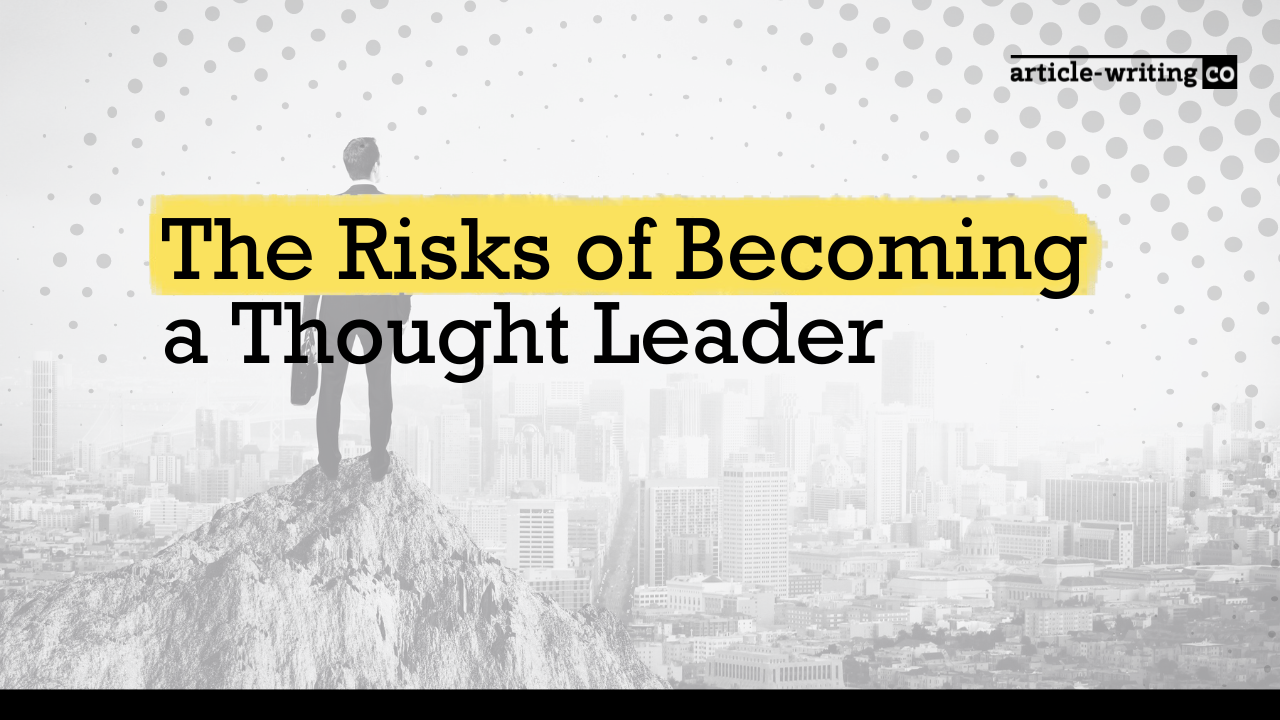Every decision that you make not only requires a certain investment of time and energy, but also has several potential ways that it could go wrong. The longer-term the project, the greater the inherent risk. This is why people trying to become a thought leader need to understand what specific risks they expose themselves to.
How Could Being A Thought Leader Be A Bad Thing?
Poor Quality
A lot of different marketing tactics these days are subject to diminishing returns. What once seemed revolutionary has now been used and copied so many times, it may seem commonplace, and loses its effectiveness. The work it takes to become a thought leader means that it isn’t as huge an issue as it is for other methods, but the truth is, there are a lot of people trying to brand them as thought leaders out there.
The risk involved here is causing a bad impression for yourself by trying to provide actionable or unique advice that is actually the same as what everyone else has in their blogs. In fact, one B2B study showed that poor thought leadership content is actually more likely to drive away potential clients. As a result, you need to really be ready to put the effort into keeping your content fresh and useful.
Content Criticism
On the other end of the spectrum, we have people who push the envelope too far in trying to put together fresh content. Challenging conventions and provoking a little controversy is good to get attention, but it’s possible to create greater issues this way. Part of being a thought leader is exposing yourself personally to criticism for the ideas and concepts you put out there, and this is a responsibility you shouldn’t take lightly. In addition, you’re also responsible for the advice you give. Say you create a guide of some sort as content and the advice ends up being untrue. Suddenly, your credibility, and the credibility of your company by proxy, is shot.
Poor ROI
Sadly, not everyone who attempts to be a thought leader succeeds, and sometimes, it’s not due to making a major mistake or not trying hard enough. In some niches, there are already established thought leaders and a glut of content, and it can be difficult to break through. This is perhaps the risk that most would-be leaders are most afraid of—putting in the time and not seeing the results.
Your best bet in this case is to try and not place your entire marketing strategy on creating a thought leader, especially as a startup. Getting from 0-100 takes time when your thought leader is an unknown, so be ready to use other methods. In addition, when choosing an individual to set up as a thought leader, make sure it’s someone with long-term plans to stay at your company. If a thought leader is established, then goes off on their own, they may take the audience with them.
Mitigating Risk As A Thought Leader
With this in mind, how you are you supposed to navigate these issues and be an effective thought leader? In general, your best course of action is to “read the room” or read the niche if you will. Certain topics and tones may be okay with some communities/specialties where it isn’t with others. In general, courting a little controversy isn’t an awful thing to do, just make sure that you balance that out with neutral advice so everyone can get some use out of your content.
In addition, while you can’t predict how everyone will react to every piece of content you put out, you should be looking at metrics to determine whether or not you see engagement or related conversions trending downward. This can be difficult for thought leadership compared to something like SEO, but our How To Become A Thought Leader covers some metrics you can look out for as well as other general advice for thought leadership success.

David is the Founder and Director of article-writing.co, the fastest-growing content creation agency in North America. He has transformed companies by offering high-quality content that has impacted their SEO ranking, revitalized websites with engaging and industry-relevant blogs and website copy, and championed successful email campaign copy.




